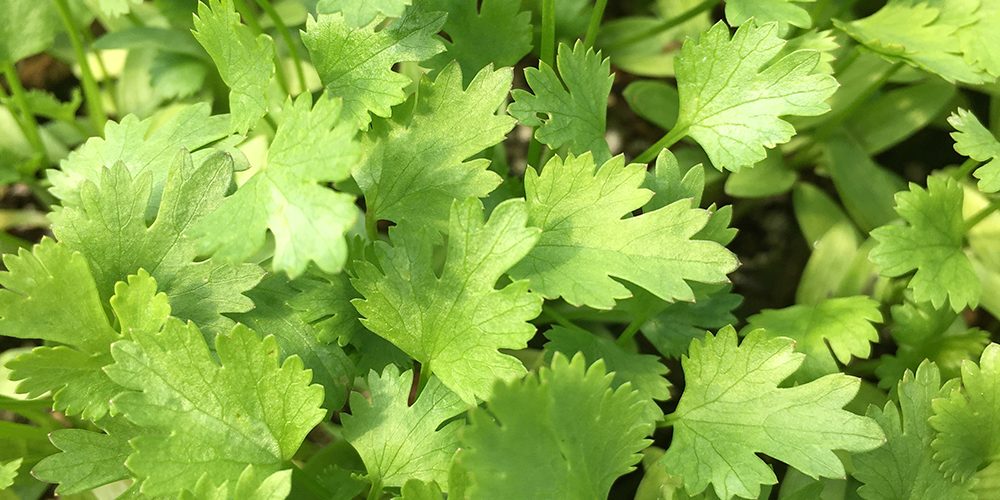For those that would like to grow some herbs in window boxes or small plant pots on a windowsill, here’s a look at the most suitable plants for indoor growing and some top tips.
Which herbs can I grow indoors?
You could grow pretty much any herbs indoors, although some are a little on the large side, so it’s probably best to avoid bronze fennel (it’s a whopper!) and Vietnamese Coriander. Others can get quite big, but you can keep the plants small by cutting them back regularly – for example, Rosemary, Mint, Sage, Tarragon.
These are our top picks for indoor growing:
Coriander & Chervil – notorious for early bolting, both these herbs will grow much more leafy inside. Keep cutting them regularly for best results. When coriander does eventually bolt, the flowers are great for bees, and afterwards you can easily collect the coriander seeds for your herb rack… get the pestle and mortar at the ready!
Parsley – This is an easy one to grow indoors, and also one that is well-used in cooking so it makes sense to have it to hand. Keep harvesting the leaves regularly to keep it going for longer.
Mint – You’ll have to cut the stems down quite often, but it will grow well indoors for the first year. After that, you’re probably best planting it outside in large containers.
Chives (& garlic chives) – whilst they do love the sun, chives work well indoors, and if you cut them regularly they’ll keep going for a long time.
Basil (& Greek Basil) – A popular one if you have a sunny, south-facing windowsill that will keep them nice and warm. Again, you’ll need to keep cutting this back to keep it leafy. Pinch stems back to a pair of young leaves on a regular basis. Be careful with watering – it can be prone to rotting at the base of the stem if the soil is too damp. Better to stand a pot in a saucer of water so that it draws water from the base, and just top up the saucer once or twice a week (i.e don’t let it stand in water ALL the time.)
Tarragon – this tends to do well indoors as long as it gets plenty of sunshine. Cut the stems back regularly to keep it a little more bushy.
Growing Tips
Choose a windowsill – a south-facing windowsill is ideal, but west/east should be okay too if the room itself is nice and light. Growing in darker rooms tends to lead to leggy, spindly plants. If you have a porch or conservatory that doesn’t get overly hot during the day, then this is a great place too.
Choosing the pots – our preference would be for pots/window box with holes at the bottom standing in a tray of water so that they draw water up from the base. Also, try and get a nice, deep pot – some of the pots sold for growing herbs inside are very shallow and the poor plants don’t get a lot of space for their roots. Aim for 15cm deep at least.
Choosing the compost – go for a good quality, preferably organic, multipurpose or potting compost and the plants should do well without the roots getting compacted and cloggy.
Watering – we’d suggest watering twice a week. It’s easy to overwater when growing in pots and particularly indoors. If you’re watering from the base, the water from the tray should soak up into the root ball quite quickly – if the pots are standing in water for days, the plants are being overwatered. If you decide to water from the top, let the top of the soil dry out in between waterings, but not so far that it cracks and pulls away from the edges.
Feeding – growing in pots means that nutrients are restricted, so the plants will benefit from a liquid feed. Add a little liquid feed when you’re watering (follow instructions) once every 4-6 weeks and that should keep them nice and healthy.
Harvesting & cutting – as mentioned, most of the herbs will do best if you cut them regularly, even if you don’t want to use them in cooking. Don’t forget that you can always stand the stems in vases with flowers from the garden to make nice posies!

